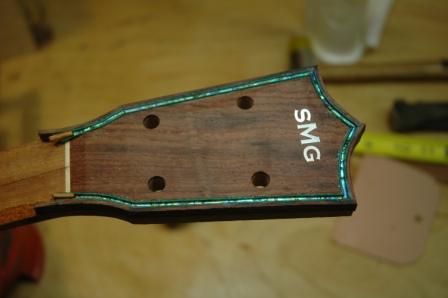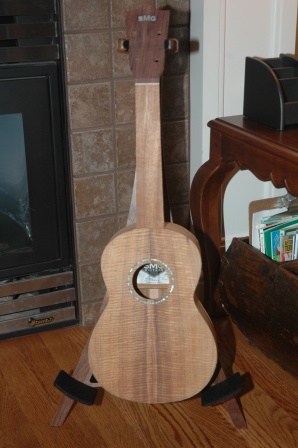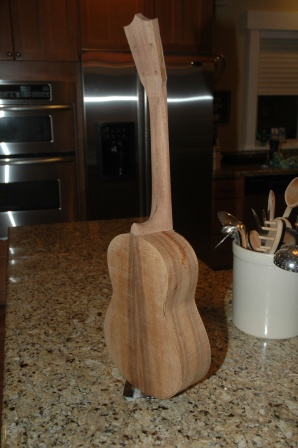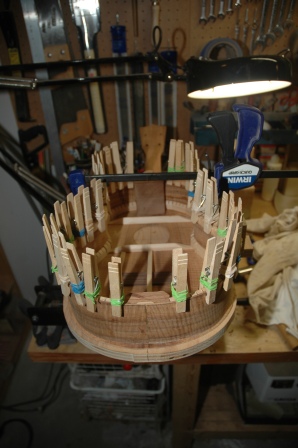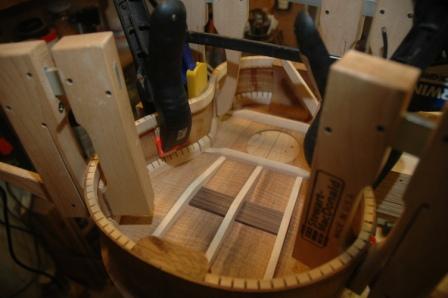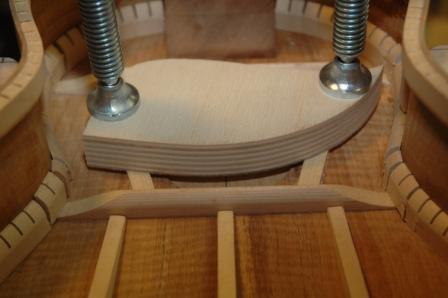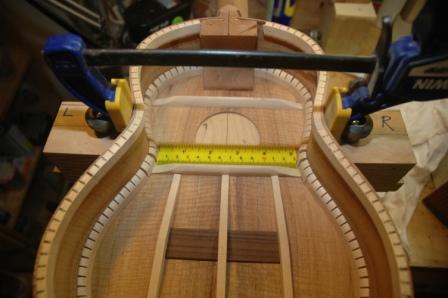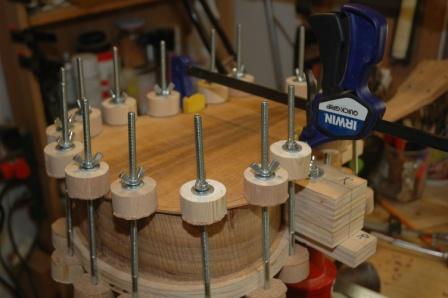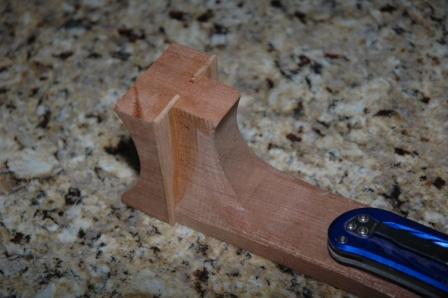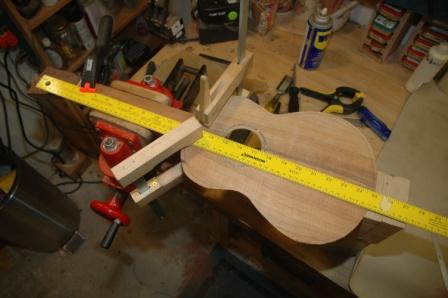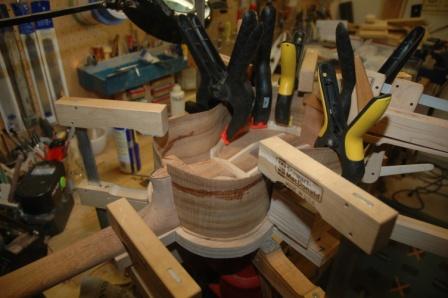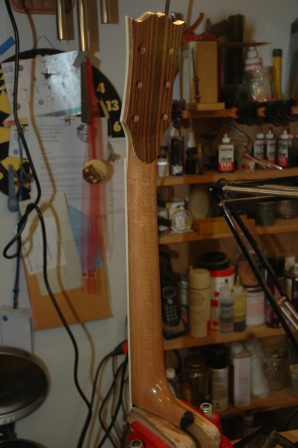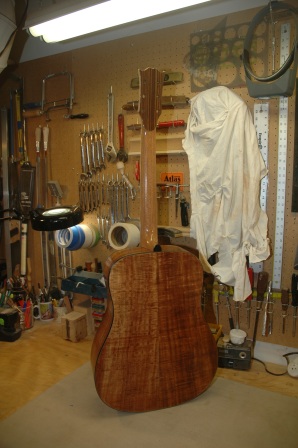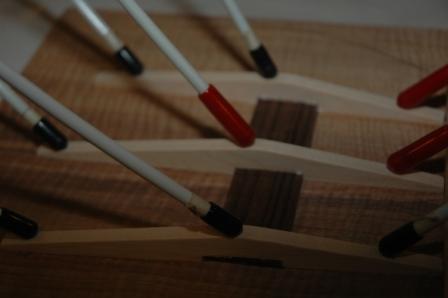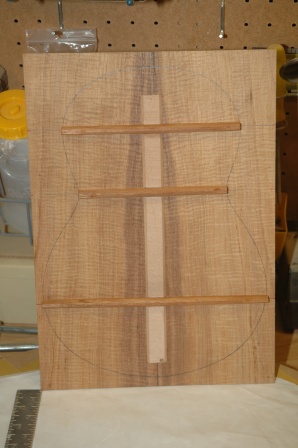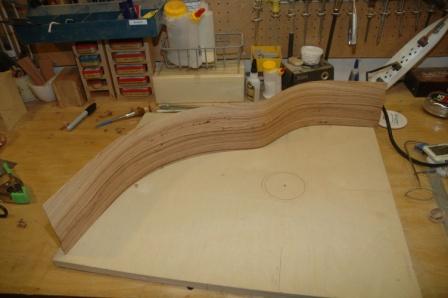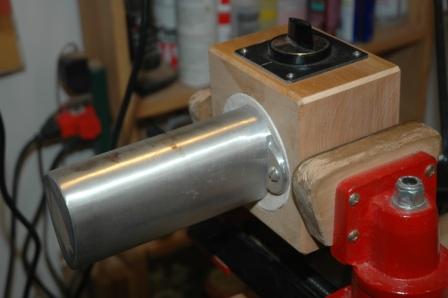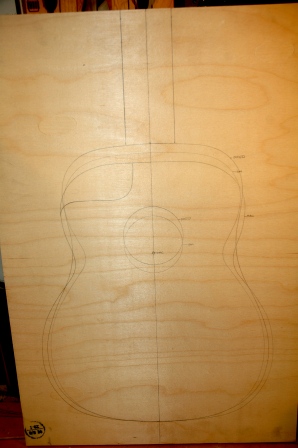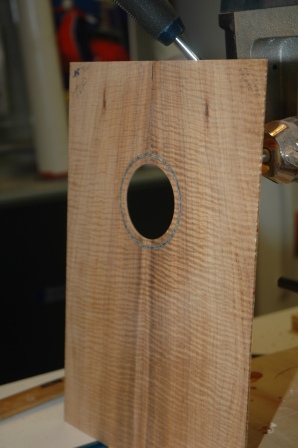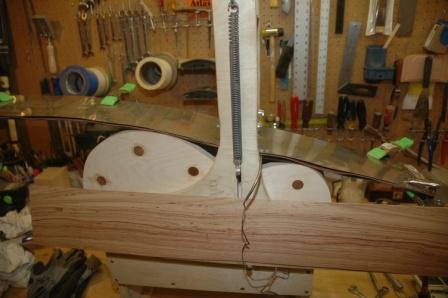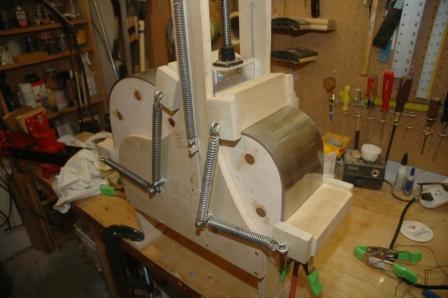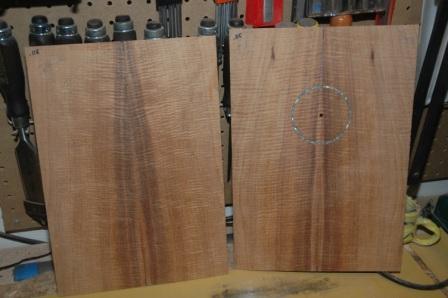Uke 1101 – Paua Purfling for the Headstock
April 30, 2011
This is one of my favorite parts of building: Paua purfling. I use abalam from the Duke of Pearl (apparently he invented abalam, which is appropriately laminated abalone). I’ve settled on rosewood for the binding, and have prepared all the binding with red accent strips, then thinning it down to around .080″. Four strips are sitting in the side bender overnight. I’ll pull them out tomorrow and add more curve with the bending iron. The channels are already cut into the body to accept the binding and purfling. I do, however, still need to chisel out the channels where the body meets the neck. The router bit can’t be taken too close to the neck so as to avoid putting big inappropriate divots in the neck, hence the need to chisel.
In the meantime, while the binding cures in the bender, I tackled the headstock.
